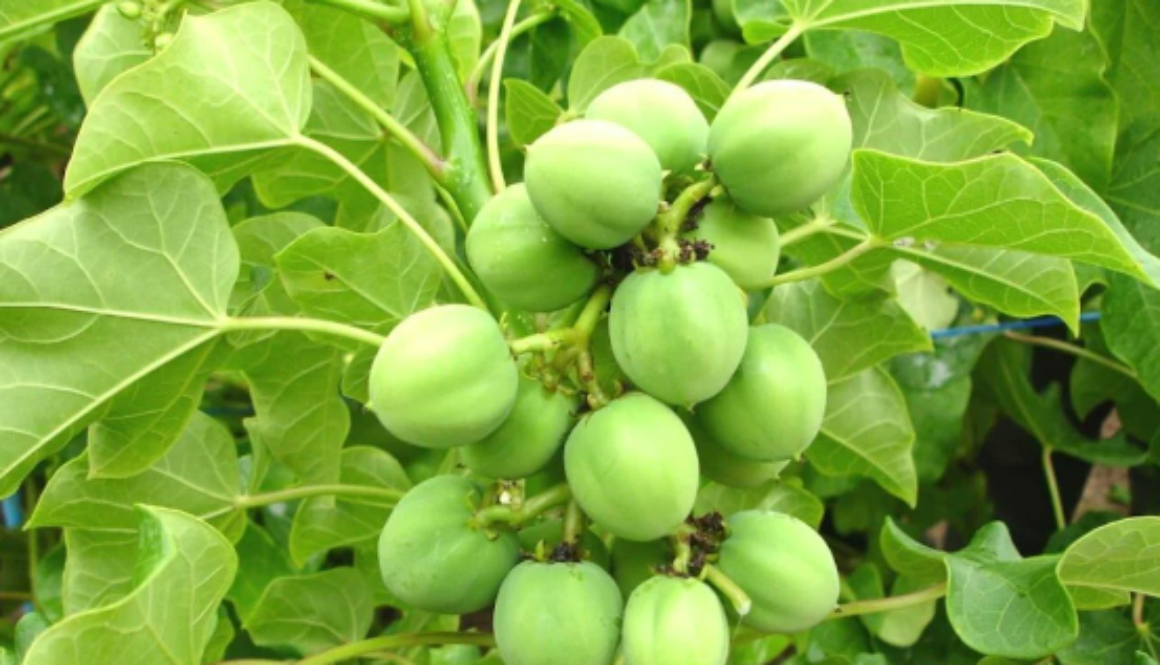Jamal Ghota
It is common in village hedges and fencing, now being cultivated for its seeds. A small soft wooded tall shrub with 3-5 angled ovate and cordate leaves. Flowers are greenish yellow. Fruit is a globose ovoid capsule. Seed ovoid, oblong and dull brownish black. Flowering and fruiting in most part of the year.
Part used: Leaf, Stem, Seed and Fruit
Usage: In Ayurveda the fruit and seed are considered astringent and useful for treating chronic dysentery, anaemia and fistula. Leaf juice has insecticidal properties and applied externally over tumour’s, piles and scabies. Decoction of the bark is given for rheumatism and leprosy. Tender twigs, as toothbrush strengthen the gums. Fresh latex from stem is useful in the treatment of pyorrhea, bleeding gums, gingivitis and also for treating scabies, eczema and ringworms. Seed oil is used as cleansing agent for wounds and sores. Its oil now known as biodiesel.
Agrotechniques : Propagated through seeds/cuttings, platted at 3 x 3 m distance and for single row plantation spacing should be 2 x 2 m. The pit size should be 0.30m . Fertilizer application @ 250 gms. per plant having
N.P.K. (15:15:15) should be repeated at the start of rainy season every year from 2nd year onwards. 3 Seeds should be sown in each pit. But by the end of August only one healthy plant to be retained. In 4th year plant is
expected to be ready to produce seeds. From 5th year onwards the seed production start increasing, which stabilizes from 7th year onwards. One or two irrigation and weeding is required after rainy season. After drying
the fruits in shades, the seeds should be collected. Yield stabilizes at 700 kg/ha in fifth year onwards.

